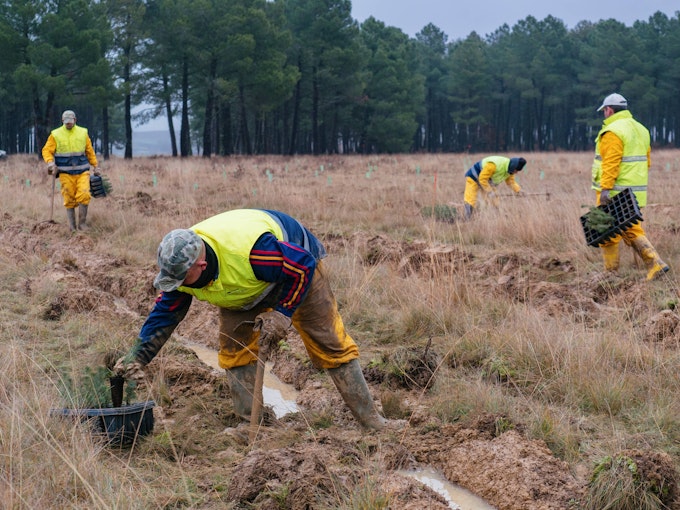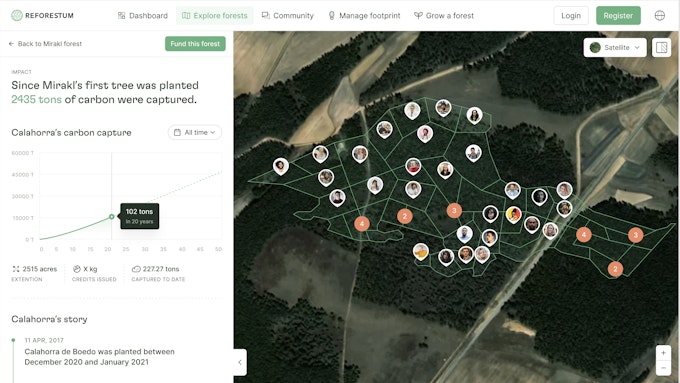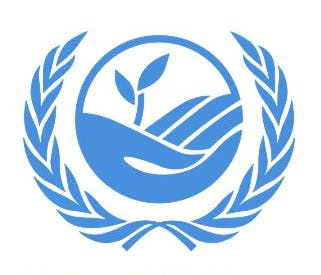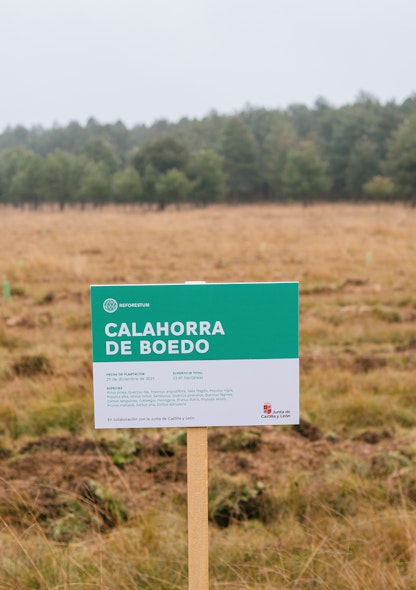Development of afforestation projects and their certification process in Spain
1. What is an afforestation project?
Before getting into the subject, it’s worth briefly highlighting the role that trees play for the environment and in the fight against climate change: Trees emit oxygen and absorb carbon dioxide (CO2), which is the main component of greenhouse gases (GHG). Forests are also essential because, among other functions, they reduce soil erosion and help restore soil, conserving water and supporting diverse and complex ecosystems, fostering biodiversity.
A distinction should be made between the terms "afforestation" and "reforestation," which are nuanced, despite their often being used synonymously. "Reforestation" is the process of planting trees in a forest whose numbers have declined, while "afforestation" is the process of planting new trees or seeds in an area where there were no trees before, creating a new forest.
In this text, we are going to use the term "afforestation," given that the projects developed by Reforestum involve intervention in places that were not previously forested (at least not before 1989, according to the relevant Spanish regulatory bodies). Under the nomenclatures defined in the context of the Kyoto Protocol (used in the Spanish regulations) "afforestation" is understood as a process that results in the transformation of non-forest land (e.g. land intended for agricultural or livestock use) into forest land through direct human action by planting, seeding and/or the encouragement of natural seed sources.
Simply put, an afforestation project is an activity that transforms a given piece of land, through the planting of trees, into a forest, thus converting it into forest land.
This is particularly relevant as through afforestation projects and through the resulting increase in forest cover, carbon sinks are generated. In this way, CO2 is sequestered or fixed.
2. The Spanish Context
Afforestation projects are particularly relevant in the Spanish context. The European Union's Special Report number 33 "Combating desertification in the EU: a growing threat that needs to be tackled more intensively" (2018) highlights the alarming situation in Spain. Spain is increasingly affected by the process of desertification, and is even currently seeing some areas become semi-desertified due to a mixture of the following conditions typical of the Iberian region: semi-arid climate in large areas, seasonal droughts, extreme variability of rainfall, and sudden heavy rains.
Global Forest Watch (GFW) concludes that, from 2001 to 2020, the Spanish territory lost 1.33 million hectares of forest mass, a 12% reduction, which was equivalent to an increase of 503 million tonnes of CO2 emissions.
Afforestation projects are presented as an effective and necessary mechanism to halt the desertification process that the Spanish territory is undergoing, which is an additional reason to opt for this type of project on the peninsula.
3. Developing an afforestation project in Spain: How does it work?
In order to understand the process of developing an afforestation project in Spain, it is important to identify the main actors involved:
- Developer/Forestry Promoter: This is the entity that promotes the project, typically acting as a financing channel or intermediary that makes reforestation possible. Reforestum carries out this task through its collaborative reforestation model.
- Executor: The organization that carries out the afforestation.
- Competent authority: A public administrative body e.g. autonomous community, city council, the community of neighbors, etc. This actor is usually also the owner of the land, which is often public. It should be noted that the ownership of the land does not change when an afforestation project is carried out, but rather the CO2 absorption rights are transferred to the forestry developer.
- OECC (Oficina Española del Cambio Climático): Spanish Climate Change Office. This is the body in charge of developing and managing policies related to climate change in Spain, as well as regulating carbon absorption projects and their standards, methodologies, and the relationship between private companies and the national carbon credit market.
- Reforestum: The organization in charge of providing visibility and enhancing the transparency and traceability of projects through its technical platform. It sometimes plays the role of the forestry promoter.
Having introduced the main actors involved in an afforestation project, we will now present the different steps that take place in the process of an afforestation project from start to finish.

3.a Request for availability of land for afforestation and presentation of the technical project.
The first step in developing an afforestation project is to define the geographical scope of the project. This decision may be motivated by economic criteria, conditions that ensure the survival of the project, and/or environmental objectives such as ecosystem restoration, soil regeneration, increasing resilience to climate change, combating desertification, or maximising carbon sequestration of the project.
Once the geographical area of action has been defined, a request for the availability of land for repopulation is submitted to the owner of the land (normally owned by local councils or autonomous communities).
After the approval of this request, a technical project is presented, which must be approved before proceeding with the signing of an agreement. This technical project includes an analysis of the conditioning factors and soil characteristics, seasonal quality, rainfall, type of terrain, etc., and is submitted to the Servicios Técnicos de las Entidades Gestoras (Technical Services of the Management Entities) of the forest for verification and technical approval. The project must include the technical conditions that each autonomous community establishes for each specific territorial area. These are generally included in regional technical specifications. Such specifications stipulate the species that can be planted as well as their density and distribution and the permitted methods of land preparation.
3.b Signing of the collaboration agreement.
The afforestation agreement is signed directly with the owner entity. The owner entity might be a city hall, neighbourhood council, Comunidad de Montes (mountains community) or, in the case of Montes de Utilidad Pública (public utility mountains), with the autonomous community responsible for the forestry management of the land in question.
As such, when considering an afforestation project, Reforestum advocates developing the project with the collaboration of the local community of the location in question (town hall, neighbourhood councils and/or competent autonomous administration). In consensus with them, Reforestum achieves a more harmonised and resilient impact, ensuring the sustainability of the project in the long term.
Through the application, and as formalised in the corresponding agreement, the landowner agrees that the project developer or promoter acquires the rights to the carbon offsets generated by the project, and may trade them or use them to offset emissions in its own economic activity, if appropriate.
The standard duration of these reforestation agreements is set at 4 years, including the initial reforestation and the subsequent maintenance during the following 3 annual or planting campaigns - generally known as "replantings" - which guarantees the percentage of live plants agreed with the landowner in the agreement.
Once this four year period has passed, the owner of the land (the local council or the autonomous community) must take charge of the maintenance of the project, as established in the forestry law. Likewise, when the agreement is signed and the project has been approved, the project can be pre-registered with the OECC, and once the project has been executed, the certification process begins.
3.c Project Execution
The project implementation process is divided into two main stages:
c.1 Terrain preparation:
This phase is essential to facilitate a good grounding of the plants’ roots as well as good water infiltration at the time of planting. Depending on the characteristics of the soil, different preparation techniques are used: subsoiling with a bulldozer, mechanised hollowing with a backhoe, hollowing with backhoe, etc. Soil preparation is necessary to be able to proceed with the replanting. If required, prior to land preparation, competing vegetation (mainly scrub) that could compromise the viability of future afforestation must be eliminated through prior mechanised clearing.
Once the soil has been prepared, some time should be allowed before replanting so that the soil can oxygenate and is in an optimum condition.
c.2 Planting:
The planting of vegetation is conditioned by the need to obtain a vegetative cover that improves the forest condition of the area. This is something that would not be achieved without human intervention. The species chosen for reforestation are planted by hand. In view of the climatic and edaphic studies, and taking into account the other issues indicated, plants with root balls are normally used in order to ensure optimum growth. The planting process has a variable duration depending on the size and characteristics of the land.
Different methods are used to defend the repopulation from wildlife, such as perimeter enclosures, or placing individual protectors on all (or on the most sensitive or desirable) plants. Normally, biodegradable protectors are used, which can be of different types depending on the type of fauna existing in the area to be repopulated. For predators or small mammals, biodegradable nets or bamboo stakes are often employed. In addition to protection, netting provides shade in the early stages of the plants’ development. In areas with a high presence of deer and/or ungulates, it is best to use "greenhouse" type tubes, higher than 60 cm.
4. Certification and guarantees
Once the initial planting has taken place, the process of officially accrediting the afforestation project as a CO2 Absorption Project begins.
The certification of afforestation projects is key, as it ensures the quality of the implementation and maintenance of the project, as well as its continuity in the medium and long term. In Spain, the certifying body is the Spanish Office for Climate Change (OECC), which belongs to the Ministry for Ecological Transition and Demographic Challenges (MITERD). The OECC has a set of robust and strict standards that projects have to meet in order to be certified. These standards state that the absorption project, once certified, has to maintain its typology in perpetuity, as it is guaranteed that once the land use is changed to forest, it cannot be deforested. This is why certification is so important; it guarantees the survival and maintenance of the project in the long term. For these reasons, Reforestum only works with certified projects.
One of the most important steps in obtaining this certification is the presentation of technical documentation for the project. This includes the accreditation of the confirmation of execution of works, the aforementioned study of the land (including a forest inventory), the management and action plan, geographical information, the CO2 calculator, and the agreements that guarantee that the landowners commit themselves to the minimum guarantee period, which in most cases is 40 years.
As a result of afforestation actions, carbon sequestration rights are produced, which are credited by the OECC, and are equivalent to the carbon sequestration foreseen for the project. The issuance of carbon credits, explained in more detail below, is a necessary instrument to incentivise private investment in this type of project, as it endorses environmental efforts in terms of emission reductions or offsets, especially by companies.
Estimating and calculating the CO2 uptake of an afforestation project is a complex process, as uptakes occur over a long period of time (30-50 years) in an intricate ecosystem such as a forest, involving several carbon pools and as influenced by many interrelated factors.
The Spanish Climate Change Office (OECC) has developed a methodology that allows the calculation of expected carbon removals. The OECC's carbon calculator estimates removals based on the species planted and their density. One of the most complex parts of the calculation is the estimation of the number of trees that will reach maturity at the end of the growing season. This is done using existing studies on the (timber) productivity of different terrains (soil type, climate, etc.), in line with the management plan, which normally includes thinning, and takes into account possible clearings due to natural conditions.
The OECC calculator bases its calculations on the following sections:
- Expected absorptions at the end of the permanence period: Each tree species has unique characteristics, and therefore a specific CO2 absorption capacity per unit of time. Taking this into account, to calculate the total removals, the absorption capacity of each species is multiplied by the number of feet of the same species that are expected to become mature trees at the end of the permanence period. The final tally is known as predicted absorptions at the end of the permanence period, and reflects the maximum absorption capacity of the total project according to the official certification.
- Usable registered absorptions: Useful registered removals account for 20% of the expected removals over the lifetime of a project, i.e. the official removals available at the time of registration of a project. This category is sometimes referred to as "ex-ante absorptions," reflecting the idea that it is an estimated amount.
- Collateral pool: This is a guarantee instrument for registered offsets. It allows the absorption forecasts of a project to be guaranteed in the event of any incident or deviation from the plan (loss of forest mass, for example), which puts the project's development at risk. Each project registered with MITERD contributes 10% of its planned absorption, thus ensuring a collective reserve through the ministry to deal with possible incidents.
Two types of CO2 uptake estimates contrasted:
- Ex-ante calculations: "Forward-looking calculations based on estimates of species’ growth for the lifetime of the project. The result of this estimate makes it possible to predict the absorptions that the project is expected to generate." (OECC). This ex-ante calculation assumes 20% of the available removals and is a theoretical quantity for the future.
- Ex-post calculations: "Calculations based on actual forest data at a specific point in time. This estimation gives information on the removals that have actually taken place in the project at the time of the calculation" (OECC). Ex-post calculations are reviewed and adjusted every 5 years through the project inventory exercise to ensure that the data are reliable. Therefore, every 5 years the project developer has to submit supporting and informative documentation on the status of the project with quantitative and qualitative data.

The calculation process for estimating a project's projected absorptions
We will now explain the complete process by which the OECC estimates the CO2 absorption of an afforestation project and issues the corresponding carbon credits with a concrete example.
Gross ex-ante calculation: First, the CO2 that will be absorbed by the forest in the future is estimated based on the expected growth of the species to be planted over the lifetime of the project (typically 40-50 years). In other words, the amount of CO2 that the trees specified in the project will absorb over the agreed period is calculated and submitted to OECC. For this purpose, the OECC provides information per species, which can be found in the Ministry's calculator.
Calculation of available absorptions - ex ante credits: 20% is subtracted from the total available absorptions.
In this simplified manner, we can understand in an applied way how the calculations explained above are done.
5. Digitalisation of the project: The Reforestum Platform
The forestation projects are digitised on the Reforestum platform, through maps that allow users to follow the development and evolution of the projects, providing greater clarity and transparency in the community. This is a unique and innovative model that generates trust and greater traceability.
Carbon markets often rely on data collected during the early stages of projects, making it difficult to precisely know the amount of carbon emissions that have been sequestered or avoided at any given time. Carbon credits are often abstract concepts for end-users, who do not plainly see the final impact of the funds they have invested. In response to this problem, Reforestum proposes the forest shares model.
Forest shares are portions of a forest, measured in square meters, which are financed by a given user seeking to offset their carbon footprint. The user acquires present and future CO2 absorption rights proportional to the size of their participation. The afforestation projects are digitised on the Reforestum platform, which allows users to track their development and evolution, providing greater clarity and transparency in the community. This is a unique and innovative model that generates trust and greater traceability.
To find out more about Reforestum's projects, as well as the differences between afforestation and conservation projects, check out this article.
As we have shown, there are many steps involved in reifying successful forestry projects and in guaranteeing the many benefits they provide. These benefits include sequestering CO2 over the long term, but also fostering local biodiversity and other environmental and social benefits. Doing things the right way, with the right local partners, and following wherever possible all certification rules, no matter how exigent, is vital in ensuring the success of afforestation activities. Reforestum is proud to support its local partners and to learn from the local communities where we operate, constantly improving the way we do what we do.






